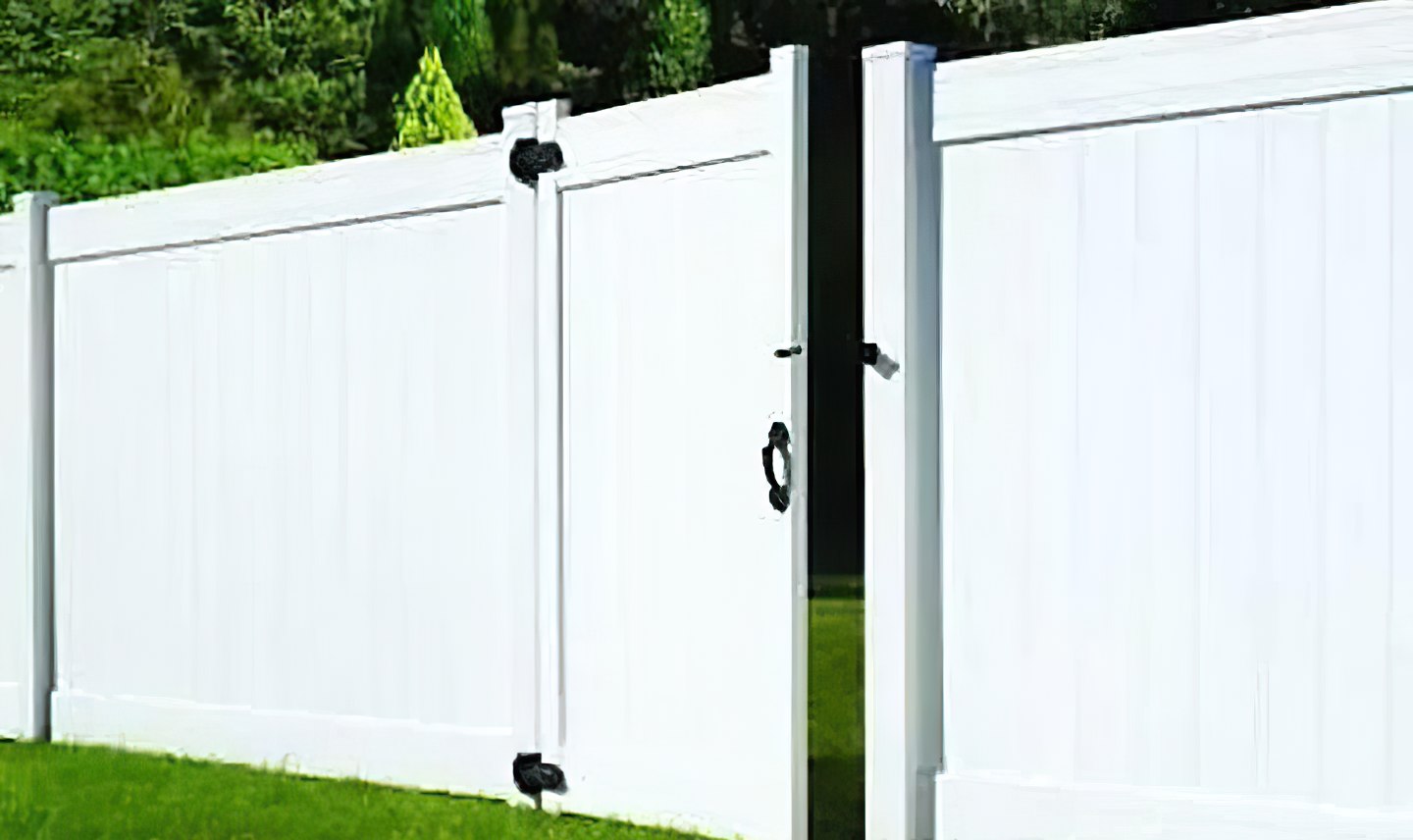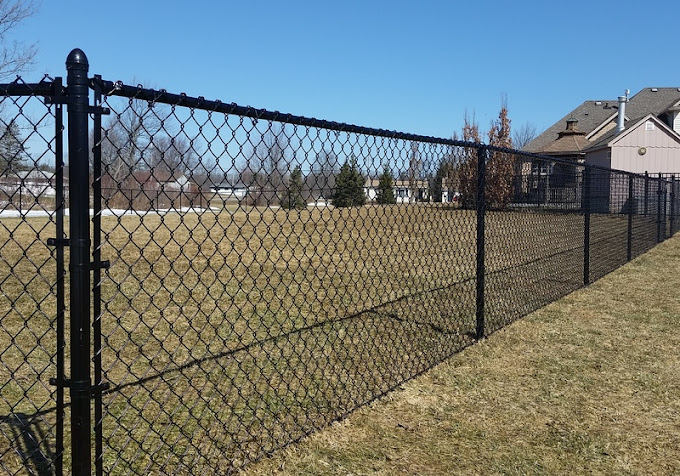Child safety is a top priority for any responsible parent, caregiver, or neighborhood hosting many…

Creating Escape-Proof Fence Enclosures for Your Pets
Hey there, pet lovers! If you’re like me, your furry friends are essential to your family. Keeping them safe and happy is a top priority, especially regarding outdoor adventures in the backyard. That’s why having a secure fence is crucial for your pets’ safety and freedom. In this article, we’ll dive into the importance of an escape-proof backyard fence and share some practical tips and ideas to create a haven for your beloved pets. Let’s get started!
Why Secure Backyard Fences Matter
A secure backyard fence is not just about keeping your pets contained; it’s about ensuring their safety and happiness. Unsecured fences can lead to many problems, including your pets wandering off, getting into accidents, or encountering potential hazards outside your property. Additionally, a fence gives your pets freedom and independence, allowing them to explore and play in a controlled environment.
The Need for Escape-Proof Enclosures
Traditional fences might only sometimes be sufficient to keep curious and energetic pets from finding their way out. Pets are resourceful creatures and can find weaknesses or gaps in fences that we might overlook. Gaps in fences are where escape-proof enclosures come into play. These specially designed structures are built to withstand the antics of even the most determined escape artists, providing peace of mind for pet owners.
Assessing Your Current Fence
As you delve into the world of fence assessment, understanding the condition of your current fence is the crucial first step to making informed decisions for the future.
Identifying Weak Points
The first step in creating an escape-proof enclosure is to assess your current fence. Walk around the perimeter and inspect for any weak points, such as loose boards, damaged sections, or gaps between the fence and the ground. These areas could be potential escape routes for your pets.
Watch Out for Digging Spots
Pets, especially dogs, have an instinct to dig. Check the fence line for any signs of digging or areas where your pets may attempt to dig under the fence. These spots need to be addressed to prevent escape attempts.
Overall Fence Integrity
Check the overall stability and condition of your fence. Ensure it stands tall and sturdy without any significant leaning or wobbling. A strong foundation is essential for an effective escape-proof enclosure.

Choosing the Right Fence Materials
Choosing the right materials is one of the most critical factors when selecting the ideal fence for your needs.
Durable and Pet-Friendly Materials
When constructing an escape-proof enclosure, choosing the right materials is vital. Opt for durable and pet-friendly options like vinyl, wood, metal, or composite materials. These materials are sturdy and safe for pets to be around.
Benefits of Different Materials
Each type of material has its advantages. Vinyl fences are low-maintenance and resistant to weathering, while wood fences provide a natural look and feel. Metal and composite materials offer excellent durability and longevity. Consider your pets’ size and behavior to determine the most suitable material.
Factors to Consider
Before finalizing your material choice, consider factors like your budget, local weather conditions, and the level of maintenance you’re willing to undertake. Choosing the right material will ensure that your enclosure lasts for years.
Adding Height and Deterring Jumping
As a solution to enhance security and discourage jumping, adding height to the fence proves to be an effective and practical approach.
The Importance of Height
Height is a critical factor in preventing pets from jumping over the fence. Taller fences are more challenging for pets to scale, reducing escape risk. It also discourages potential intruders from entering your property.
Extending Fence Height
If your current fence isn’t tall enough, don’t worry! There are several ways to add height without sacrificing aesthetics. You can install lattice panels or trellises on top of the fence, making it taller without blocking sunlight and air.
Incorporating Deterrents
Along with height, you can add deterrents to discourage your pets from attempting to jump. Spiky strips or motion-activated deterrent devices can be effective in deterring agile climbers.
Reinforcing the Fence
As security becomes a top priority, reinforcing the fence is essential to enhance protection and maintain peace of mind.
Strengthening Weak Points
To create an escape-proof enclosure, reinforce weak points identified during your assessment. Use additional posts, braces, and supports to fortify these areas. Reinforcing the fence will prevent pets from finding vulnerabilities.
Hardware Cloth and Chicken Wire
Consider installing hardware cloth or chicken wire along the bottom of the fence for pets that like to dig or squeeze through small gaps. These materials act as an extra barrier to keep your pets safely contained.
Creating a Digging Barrier
Creating a digging barrier is an effective method to protect your garden from unwanted pests.
Preventing Digging Attempts
Dogs are notorious for digging; a fence will only sometimes deter their efforts. Create a digging barrier by burying the chicken wire or hardware cloth along the fence line to a depth of at least 1 foot. A digging barrier makes it harder for pets to dig their way out.
Landscaping Solutions
You can also use landscaping to discourage digging behavior. Plant dense shrubs or bushes near the fence line as a visual barrier and deter pets from digging.
Dig-Resistant Barriers
Use concrete footers or other dig-resistant barriers along the fence’s base if you have persistent diggers. Concrete footers will provide an added layer of protection against escape attempts.
Incorporating Pet-Friendly Enrichment
As pet ownership rises, incorporating pet-friendly enrichment has become essential for fostering their well-being and happiness.
Creating a Safe and Fun Environment
An escape-proof enclosure should be secure and enjoyable for your pets. Incorporate pet-friendly amenities and features to make the space engaging and entertaining.
Toys, Tunnels, and Play Structures
Install toys, tunnels, and play structures within the enclosure to entertain your pets. Puzzle toys and interactive games can help reduce boredom and prevent escape attempts borne out of restlessness.
Reducing Escape Attempts Due to Boredom
A stimulating environment can reduce the likelihood of escape attempts caused by boredom. Enriching your pet’s environment with various activities will keep them mentally and physically engaged.

Installing Pet Gates and Escape-Proof Doors
As pet safety and containment become top priorities for many households, the focus shifts to installing pet gates and escape-proof doors to provide a secure environment for our furry friends.
Importance of Pet Gates
Pet gates and escape-proof doors serve as additional safety measures within the enclosure. They allow you to control your pets’ access to certain areas, ensuring their safety and preventing escape attempts.
Choosing the Right Gates and Doors
Select gates and doors appropriate for your pet’s size and breed. Make sure they are sturdy, durable, and designed to withstand the force of determined pets.
Proper Installation and Positioning
Install gates and doors securely, ensuring no gaps or openings your pets could exploit. Proper positioning of gates is essential to maintain a secure barrier.
FAQs
Q: Can I use an invisible fence for my pets?
A: While invisible or electric fences are an option for some pet owners, physical fences may be less effective than physical fences, especially for determined or easily distracted pets. Physical fences provide a visible barrier and are generally more secure in preventing escape.
Q: How high should my escape fence be to prevent jumping?
A: The fence height depends on your pet’s size and agility. A fence at least 6 feet tall should deter jumping for most dogs. However, for large or athletic breeds, consider a taller fence.
Q: What are some pet-friendly plants I can use near the fence?
A: Some pet-friendly plants include lavender, rosemary, and sunflowers. Avoid toxic plants like lilies, azaleas, and tulips, as they can harm pets if ingested.
Q: Can I DIY my escape-proof enclosure?
A: Yes, you can! Many pet owners successfully create their escape-proof enclosures with a bit of DIY effort. Ensure you use the right materials and follow proper construction techniques to make it secure and safe for your pets.
Q: How often should I check my fence for maintenance?
A: Regularly inspect your fence at least once every few months. Look for signs of wear and tear, loose components, or any damage caused by weather or pests. Promptly address any issues to maintain the fence’s integrity.
Q: My dog is an avid digger. How can I stop this behavior?
A: To discourage digging, give your dog plenty of mental and physical stimulation. Engage in regular playtime, training sessions, and provide puzzle toys. Additionally, create a designated digging area in the yard and redirect your dog’s digging instincts there.
Conclusion
In conclusion, creating an escape-proof fence enclosure for your pets is essential for their safety and well-being. You can significantly reduce the risk of escape by assessing your current fence, choosing the right materials, adding height, and reinforcing weak points. Additionally, implementing digging barriers and incorporating pet-friendly enrichment will make the enclosure enjoyable and stimulating for your furry friends. Remember to install secure pet gates and doors to add an extra layer of protection.
With a well-maintained escape-proof enclosure, you can rest assured that your pets can roam freely in a safe environment, granting them the freedom they deserve while keeping them out of harm’s way. So, what are you waiting for? Follow these tips and create a secure and enjoyable backyard space for your beloved pets today!


